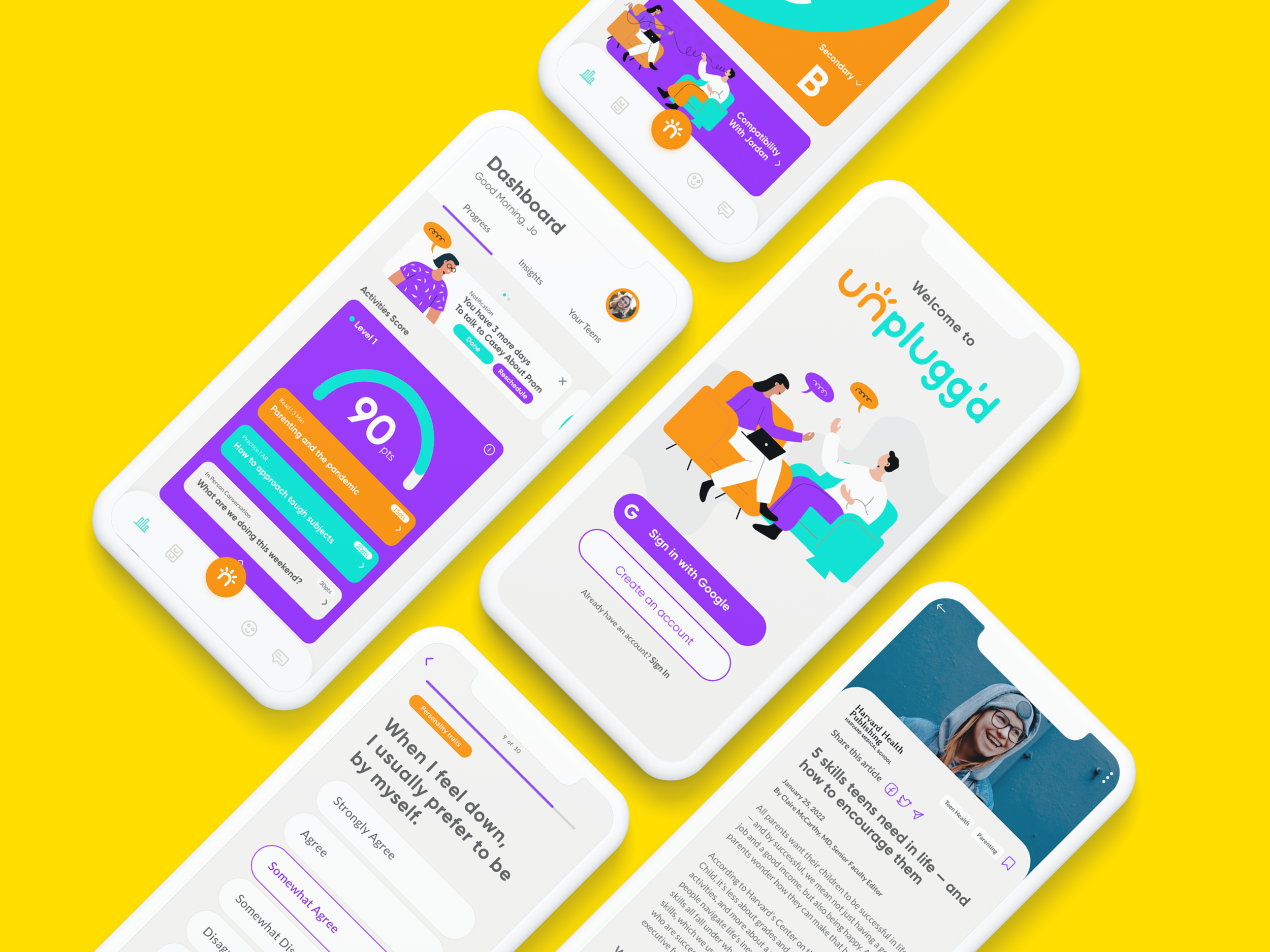
The problem
Parenting is hard. Parenting teenagers are even harder. Children experience more intense emotions during adolescents. Their body is changing, their emotions are running wild, and parents around the world don’t know what to do. In fact, according to a New York Post 2018 poll–7 out of 10 parents feel they struggle to communicate meaningfully with their teenager”
And that is not all. With the surge of social media culture, online bullying and isolation from the pandemic, teen mental health issues are at an all time high. Sadly, parents don’t have accredited resources and tools for parenting.
How might we empower parents to strengthen their relationships with their teens?
Category
Product design, branding design, AR simulation design
My Role
UX researcher, UX designer, Visual designer, brand designer.
Tools
Adobe XD, Mural, Illustrator, Photoshop, AfterEffect
Research
In order for us to design a solution, we must first fully understand the problem. My team and I categorized our research into 4 main sections:
Developing Empathy
Developing empathy was a foundational, yet easy step for our team. Each of us understood the importance of communication between parents and teens. In my case, I was sent to live with my aunt when I was 13 years old. At the time, it was one of the most frustrating period in my short life. It is not until years later, as an adult, I realized how difficult it was for my aunt to raise a teenager on her own.
My aunt Ellen (right) took me in as a 13 year old teenager and raise me as her own.
Defining the Users + User Interview
We begin the process by first defining and understanding the users. We conducted several interviews with parents and guardians of teens and ensure we selected a wide range of demographics to captures main-stream users and extreme users.
Based on our research and interviews, we created empathy maps to further explore the needs and wants of parents. From here, we were able to create two personas that represents the demographic of our users.
Once we established our personas, we pulled together all our interviews, revealed findings, revisited notes, shared key learnings, we clustered similar themes and pin pointed the following three insights:
Feature-Based Competitive Analysis
While the research findings allowed us to identify the primary user and their problem, we needed to further understand what solutions are existing in the market.
As a team, we investigated several parenting tools and apps like ‘Maro’ and ‘The Impactful Parent’ and try to understand how users can utilize these existing apps to assist them in their parenting journey.
The Solution
Introducing Unplugg’d a parenting tool that empowers parents to build better relationships with their teens, inside AND outside the app. Unplugg’d assess parents and teen’s personality type and provides personalized relationship, communication, and parenting tips. The dashboard analytics allows parents to view, manage and interact with all their teen’s data in one single view. The AR feature empowers parents to have practice conversations with their children before committing to a in-person conversation. Unplugg’d believes:
"A parent of teen(s) should be able to strengthen their communication and connection with their teen by having access to reliable resources along with personalized guidance and insights in one centralized location."
User Epics
We begin the ideation process with creations of epics. Epics helped us identified the major features that will be included in the app. Unplugg’d will be the Swiss Army knife of parenting. In the app, parents are able to access resources on parenting, get insights into their teen’s mood and activities, learn about their communication style, practice having difficult conversations, and schedule virtual therapies.
User flow
Once the epics are locked down, we quickly wen into designing the user flow. Here is where we ensured that every flow that involves a process would include a clearly labeled step flow. We created a first time user flow for a new parent to sign up, take the Unplugg’d personality quiz, tour the dashboard, then explore all the tools and capability the dashboard has to offer.
Sketches
After developing a user workflow. We did sketches to quickly visualize how the user would arrive to the dashboard. Sketches allowed us to quickly refine, review and revise versions as we continue to develop. Through sketches we are able to quickly realize our dashboard development requires the most attention.
Wire-framing
Through sketches we arrived at the first step of prototyping with wire-framing. The wireframes allowed us to test our design where we can improve interactions and layout. We were able to go though several versions and nail down on the design before we move froward to the final design.
Design System
Unplugg’d has a youthful and fun look and feel. Part of helping parents and teens to build meaningful and strong relation was to have elements of the app related to heavy and hard to have topics. Therefore it was important for us to design a brand standard that is lighthearted and cheerful.
Final Prototype
Usability Testing
After creating the prototype, we conducted 5 usability testings. Usability testing allowed us to quickly find some key issues with the current prototype and addressed them quickly.
Next Steps
Conduct user research and affinity mapping for teen users
Develop other features within the app
Create Business strategy
Partner with accredited institutions to develop personality testing and analytics









